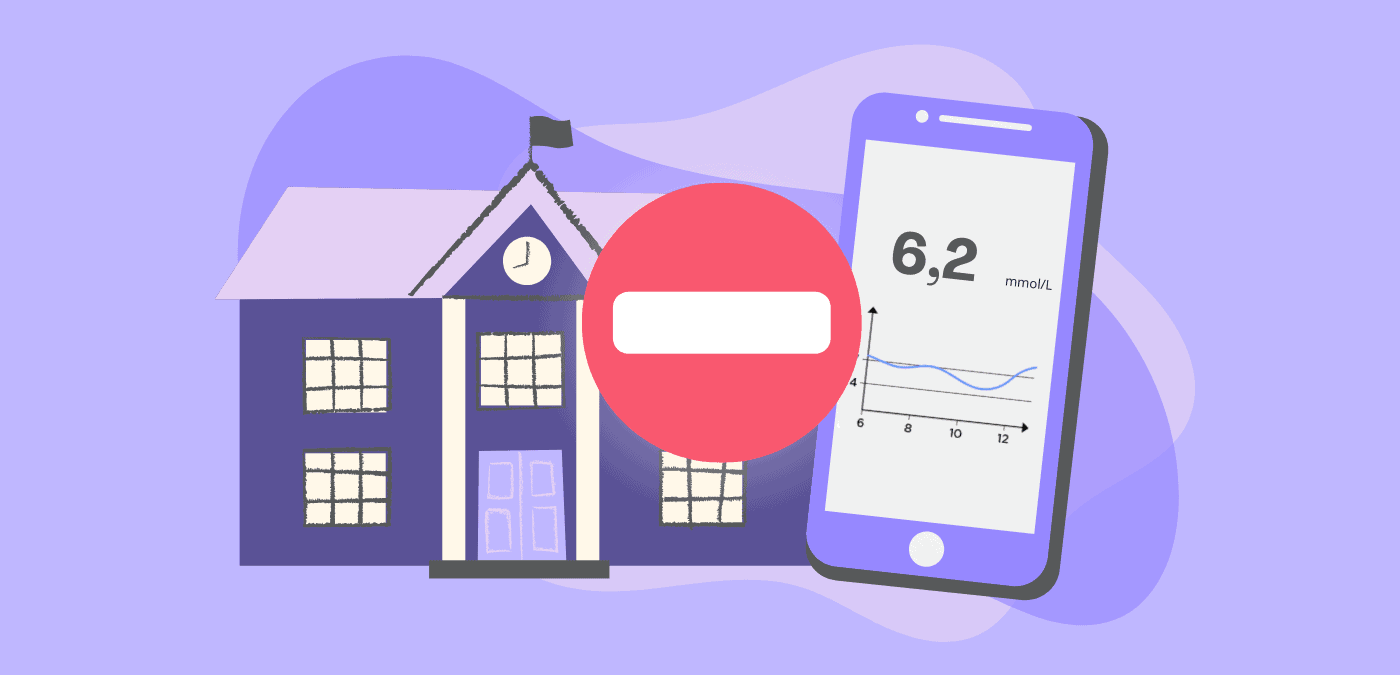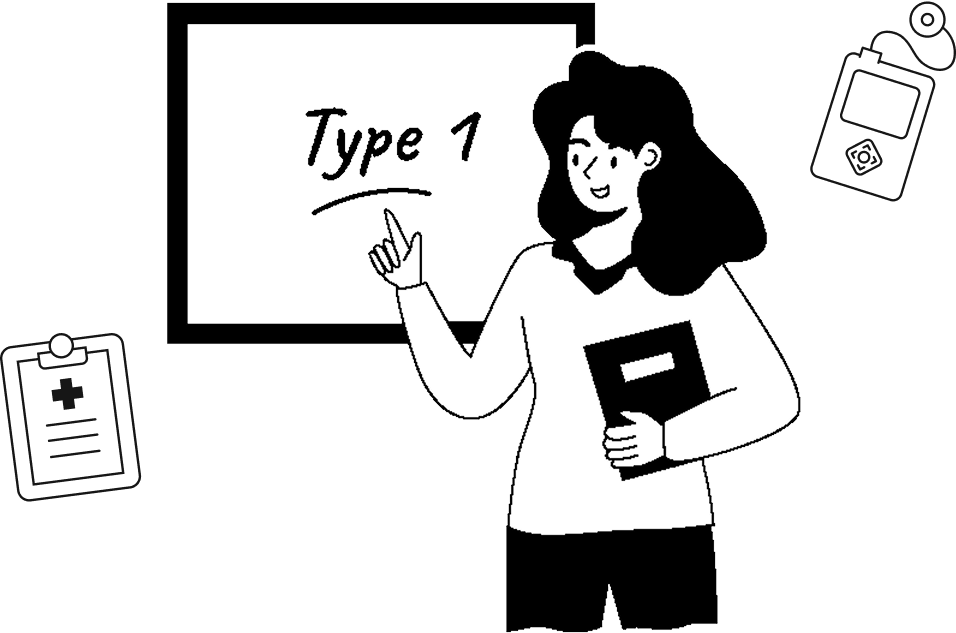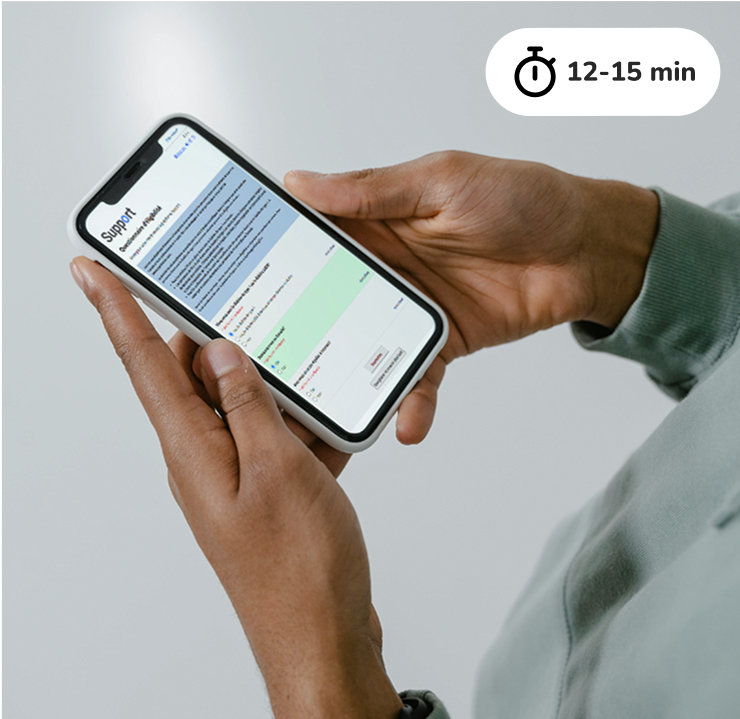Published September 2024, updated June 2025
The use of cell phones in classrooms has been banned in several provinces. Cell phones should therefore be left in bags or boxes when entering the classroom or left in the student’s locker.
But, what if your child lives with type 1 diabetes (T1D) uses a continuous glucose monitor (CGM) and a cell phone to keep track of their blood sugar? Will they have to follow this new directive?
No. When used for medical reasons, cell phones are accepted in class. Of course, the cell phone must only be used to that end!
A Canada-wide(ish) directive
In Ontario (as of November 2019), Quebec (as of January 1, 2024), British Columbia, Alberta, Saskatchewan and Atlantic Canada (as of September 2024), cell phones are officially no longer allowed anywhere, anytime in most schools. Only the Yukon, Northwest Territories, Newfoundland and Labrador, and Nunavut have yet to legislate this issue. In some provinces, the ban extends as far as smartwatches, headphones and other personal electronic devices.
For example, in Quebec, the use of cell phones, headphones and other personal devices is prohibited in classrooms in schools and vocational training centers that provide preschool, primary and secondary level education.
In Ontario, cell phones are banned all day long for students in kindergarten to grade 6, while high school students are allowed to use them except during class time. However, they don’t have access to social media websites on the school network and devices.
In Alberta, all personal electronic devices must be left in the child’s locker or school bag during class. Access to social networks is also blocked on school premises.
Make sure to check the guidelines in your province, as well as at your child’s school, as they may implement stricter rules than the provincial recommendations.
Health issues are the exception
Children who require a cell phone to manage a medical condition (e.g., diabetes) will be allowed to bring their cell phones to class, as indicated in the provincial guidelines.
However, to ensure that your child can indeed have his cell phone within reach at all times, it’s best to meet with the school staff (nurses, teachers, principal) and to include it in the personalized care plan.
In Ontario, where cell phones have been banned in schools since 2019, parents or guardian simply have to indicate in writing that the device is being used to manage diabetes in order for it to be authorized during school hours.
If you encounter any difficulties or if your request is denied, contact your school board. In Quebec, for example, school service centers are responsible for communicating the terms and conditions of the directive to students and parents.
You could also ask your doctor to sign an authorization form to ensure that your child has access to their cell phone at school. The American Diabetes Association (ADA) has published a wallet card on electronic device management that you can use. Diabète Québec is working on its version also. You can have it signed by your doctor and submit it to the school, or even slip it in your child’s school bag, pockets or emergency kit .
It’s also possible to use a receiver (available with Dexcom or Freestyle) rather than a cell phone during school hours. Please note, however, that some receivers don’t allow the sharing of blood sugar data.
References:
- Radio-Canada. (mai 2024). Le Nouveau-Brunswick va limiter l’usage du téléphone cellulaire en classe. Viewed on August 19, 2024. https://ici.radio-canada.ca/nouvelle/2071138/cellulaire-ecoles-classe-nouveau-brunswick
- Marc-Antoine Leblanc. (juin 2024). L’Alberta interdit l’utilisation des cellulaires en classe. Viewed on August 19, 2024. https://ici.radio-canada.ca/nouvelle/2081454/appareils-mobile-education-professeur-eleve-etudiant-enseignant
- Nouveau-Brunswick. (mai 2024) Mise à jour de la politique relative à la technologie pour clarifier les conditions d’utilisation des téléphones cellulaires dans les salles de classe. Viewed on August 19, 2024. https://www2.gnb.ca/content/gnb/fr/ministeres/education/nouvelles/communique.2024.05.0194.html
- Nouvelle-Écosse. (2024). Directive provinciale sur l’utilisation des téléphones portables personnels dans les écoles de la Nouvelle-Écosse. Viewed on August 19, 2024. https://www.ednet.ns.ca/sites/default/files/docs/pandireleaseprovincialdirectiveoncellphoneuseinschoolsfr.pdf
- Gouvernement du Québec. Règlements et autres actes. (2023). Décret 1498-2023 sur l’utilisation du cellulaire, des écouteurs et d’autres appareils mobiles personnels par les élèves. Gazette officielle du Québec 42 : 4785. https://www.publicationsduquebec.gouv.qc.ca/fileadmin/gazette/pdf_encrypte/lois_reglements/2023F/80815.pdf
- American Diabetes Association. Safe at school – Help for Parents. https://diabetes.org/advocacy/safe-at-school-state-laws/help-for-parents
Written by: Nathalie Kinnard, scientific writer and research assistant
Reviewed by:
- Rémi Rabasa-Lhoret, MD, Ph.D.
- Anne-Sophie Brazeau, P.Dt., Ph.D.
- Sarah Haag, R.N., B.Sc.
- Andréane Vanasse, pediatric nurse
- Claude Laforest, Eve Poirier, Domitille Dervaux and Michel Dostie, patient partners of the BETTER project.




